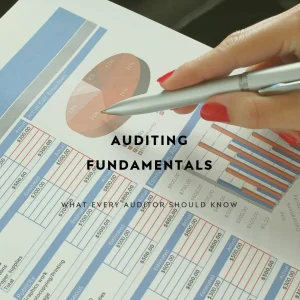Introduction to SOC 2 and Its Importance
In today’s digital landscape, where data breaches and privacy concerns are prevalent, organizations must prioritize the security and integrity of their systems. One of the key frameworks that help achieve this is the Service Organization Control 2 (SOC 2) report. SOC 2 is specifically designed for service organizations that handle customer data, focusing on five trust service criteria: security, availability, processing integrity, confidentiality, and privacy. The primary purpose of SOC 2 is to ensure that these organizations have adequate controls in place to protect sensitive information and maintain the trust of their clients.
Implications of SOC 2 Compliance
For organizations, particularly those in service industries such as cloud computing, data hosting, and SaaS, achieving SOC 2 compliance is not just a regulatory requirement; it is a competitive advantage. Compliance with SOC 2 demonstrates a commitment to data security and privacy, which can significantly enhance customer trust and loyalty. Furthermore, it can lead to:
- Increased Business Opportunities: Many clients, especially in regulated industries, require SOC 2 compliance as a prerequisite for doing business. This can open doors to new contracts and partnerships.
- Risk Mitigation: By adhering to SOC 2 standards, organizations can identify and address vulnerabilities in their systems, thereby reducing the risk of data breaches and associated financial losses.
- Enhanced Reputation: A clean SOC 2 report can serve as a powerful marketing tool, showcasing an organization’s dedication to maintaining high security and privacy standards.
Understanding SOC 2 Exceptions
Despite the best efforts to comply with SOC 2 requirements, organizations may encounter SOC 2 exceptions—areas where their controls or processes do not meet the defined criteria. These exceptions can arise from various factors, including control gaps, ineffective implementation of policies, or unforeseen operational challenges. The implications of SOC 2 exceptions can be significant:
- Operational Disruptions: Exceptions may indicate weaknesses in an organization’s processes, potentially leading to operational inefficiencies or failures.
- Reputational Damage: If exceptions are not addressed transparently, they can erode customer trust and damage the organization’s reputation in the marketplace.
- Regulatory Scrutiny: Persistent exceptions may attract the attention of regulators, leading to audits or penalties that can further impact business operations.
Understanding SOC 2 Exceptions
Understanding exceptions is crucial for fostering a culture of compliance. SOC 2 exceptions refer to instances where an organization fails to meet the established criteria for compliance, which can significantly impact its operational integrity and reputation.
Definition and Examples of SOC 2 Exceptions
SOC 2 exceptions can be categorized primarily into two types: control deficiencies and deviations.
- Control Deficiencies occur when a control is in place but does not operate effectively. For instance, if an organization has a control mechanism for monitoring access logs but fails to review these logs during a specific period, this would constitute a control deficiency [2].
- Deviations arise when there is a failure to adhere to established policies or procedures. An example could be a situation where employees do not follow the prescribed data handling protocols, leading to potential data breaches or loss of sensitive information.
These exceptions highlight vulnerabilities in an organization’s compliance framework and can serve as indicators of deeper systemic issues.
Root Causes of SOC 2 Exceptions
Several factors contribute to the occurrence of SOC 2 exceptions, including:
- Lack of Awareness: Employees may not fully understand the importance of SOC 2 compliance or the specific controls in place. This lack of awareness can lead to unintentional non-compliance [1].
- Inadequate Training: Regular training sessions are essential for ensuring that staff are well-versed in system operation protocols. Without proper training, employees may not know how to effectively implement or monitor controls, resulting in exceptions [1].
- Insufficient Resources: Organizations may not allocate enough resources—whether in terms of personnel, technology, or time—to adequately monitor and enforce compliance measures. This can lead to lapses in control effectiveness and increased risk of exceptions [3].
Consequences of Not Addressing SOC 2 Exceptions
Failing to address SOC 2 exceptions can have both short-term and long-term consequences:
- Short-term Consequences: Immediate impacts may include operational disruptions, increased scrutiny from auditors, and potential financial penalties. Organizations may also face reputational damage if exceptions lead to data breaches or loss of customer trust [7].
- Long-term Consequences: Over time, persistent SOC 2 exceptions can result in a weakened compliance posture, making it difficult for organizations to secure new business opportunities. Many companies require their vendors to demonstrate SOC 2 compliance, and failure to do so can limit market access and growth potential [6]. Additionally, a culture that does not prioritize compliance can lead to ongoing vulnerabilities and increased risk of regulatory penalties.
The Role of Leadership in Fostering Compliance
The role of leadership is paramount in cultivating a culture that proactively addresses exceptions. A strong commitment from leadership not only sets the tone for compliance but also significantly influences the organization’s overall approach to risk management and ethical behavior. Here are key points that underscore the critical role of leadership in fostering a compliance-oriented culture:
- Leadership Commitment is Vital: The foundation of a compliance-oriented culture begins with leadership’s unwavering commitment to ethical practices and regulatory adherence. When leaders prioritize compliance, it sends a clear message throughout the organization that these values are essential. This commitment should be reflected in the organization’s policies, practices, and daily operations, ensuring that compliance is not merely a checkbox but a core value of the organization [10][11].
- Leading by Example: Leadership must embody the principles of compliance they wish to instill in their teams. By demonstrating ethical behavior and making compliance a priority in their decision-making processes, leaders can effectively model the expected conduct for employees. This approach not only reinforces compliance expectations but also fosters an environment where employees feel empowered to voice concerns and report exceptions without fear of retribution [11][14].
- Allocating Resources and Support: For compliance initiatives to be effective, leadership must allocate the necessary resources and support. This includes investing in training programs, compliance tools, and personnel dedicated to monitoring and enforcing compliance standards. By ensuring that teams have the resources they need, leaders can facilitate a proactive approach to identifying and addressing SOC 2 exceptions before they escalate into significant issues [8][10][15].
Strategies for Building a Culture of Compliance
Creating a culture of compliance within an organization is essential for preventing SOC 2 exceptions and ensuring that data security and management practices are upheld. Here are actionable strategies that leadership teams and compliance officers can implement to foster this culture:
- Encourage Employee Engagement through Awareness Programs and Training Sessions:
- Conduct regular training sessions that focus on SOC 2 compliance, emphasizing its importance and relevance to every employee’s role. This not only raises awareness but also empowers employees to take ownership of compliance practices. Engaging employees through interactive workshops and real-life scenarios can enhance understanding and retention of compliance principles [3][11].
- Establish Clear Policies and Procedures:
- Develop and communicate comprehensive policies that clearly outline SOC 2 requirements and the procedures for addressing exceptions. These policies should be easily accessible and regularly updated to reflect any changes in compliance standards or organizational practices. By providing a clear framework, employees will have a better understanding of their responsibilities and the steps to take when exceptions arise [12][14].
- Implement Regular Audits and Assessments:
- Schedule periodic internal audits and assessments to proactively identify compliance gaps before they lead to exceptions. This practice not only helps in maintaining compliance but also reinforces the organization’s commitment to security and operational integrity. Regular reviews can facilitate continuous improvement and ensure that the organization adapts to evolving compliance requirements [2][11][15].
Conduct regular training sessions that focus on SOC 2 compliance, emphasizing its importance and relevance to every employee’s role. This not only raises awareness but also empowers employees to take ownership of compliance practices. Engaging employees through interactive workshops and real-life scenarios can enhance understanding and retention of compliance principles [3][11].
Establish Clear Policies and Procedures:
Develop and communicate comprehensive policies that clearly outline SOC 2 requirements and the procedures for addressing exceptions. These policies should be easily accessible and regularly updated to reflect any changes in compliance standards or organizational practices. By providing a clear framework, employees will have a better understanding of their responsibilities and the steps to take when exceptions arise [12][14].
Implement Regular Audits and Assessments:
By integrating these strategies into the organizational framework, companies can cultivate a proactive compliance culture that minimizes the risk of SOC 2 exceptions, ultimately enhancing trust and security in their operations.
Utilizing Technology for Compliance Management
In the pursuit of a robust compliance culture, organizations must leverage technology to effectively manage SOC 2 compliance and minimize exceptions. Here are key strategies and insights on how technology can play a pivotal role in fostering a compliance-oriented environment:
- Compliance Management Systems and Software: Implementing dedicated compliance management systems is essential for tracking SOC 2 compliance. These systems centralize all compliance-related information, making it easier for organizations to monitor their adherence to the five trust service criteria: security, availability, processing integrity, confidentiality, and privacy. By automating the collection and organization of compliance data, these systems help ensure that all necessary documentation is readily available for audits and assessments, thereby reducing the likelihood of exceptions arising from oversight or mismanagement [6][9].
- Data Analytics and Reporting Tools: The integration of data analytics into compliance management can significantly enhance an organization’s ability to identify patterns related to SOC 2 exceptions. By analyzing historical compliance data, organizations can uncover trends that may indicate potential risks or areas of non-compliance. Reporting tools can provide real-time insights into compliance status, enabling leadership teams and compliance officers to make informed decisions and take proactive measures to address any emerging issues before they escalate into significant exceptions [4][10].
- Best Practices for Technology Integration: To effectively incorporate technology into the compliance framework, organizations should consider the following best practices:
- Establish Clear Objectives: Define specific compliance goals and objectives that align with the organization’s overall strategy. This clarity will guide the selection of appropriate technology solutions.
- Invest in Training: Ensure that all employees, especially those in compliance roles, are trained on how to use compliance management tools effectively. This training should include understanding the importance of data integrity and the role of technology in maintaining compliance.
- Continuous Monitoring and Improvement: Utilize technology not just for compliance tracking but also for continuous improvement. Regularly review and update compliance processes based on insights gained from data analytics, ensuring that the organization remains agile and responsive to changes in regulatory requirements or internal policies [11][12].
By embracing these technological strategies, organizations can build a culture of compliance that not only addresses SOC 2 exceptions proactively but also enhances overall operational efficiency and trust with stakeholders.
Monitoring and Continuous Improvement
Fostering a culture of compliance is essential for organizations aiming to prevent exceptions and enhance their security posture. A proactive approach to compliance not only mitigates risks but also builds trust with stakeholders. Here are key strategies to ensure ongoing monitoring and continuous improvement in compliance efforts:
- Establishing Key Performance Indicators (KPIs):
Setting clear and measurable KPIs is crucial for effective compliance monitoring. These indicators should reflect the organization’s compliance objectives and provide insights into the effectiveness of current policies and controls. Regularly tracking these KPIs allows leadership teams to identify trends, assess compliance performance, and make informed decisions to address any deficiencies. For instance, metrics could include the number of compliance training sessions completed, the frequency of policy reviews, and the rate of identified exceptions during audits. This data-driven approach enables organizations to proactively manage compliance risks and enhance their overall security framework [8][9]. - Regular Review and Updates of Compliance Policies and Training Materials:
Compliance is not a one-time effort; it requires ongoing attention and adaptation to changing regulations and business environments. Organizations should implement a schedule for regular reviews of their compliance policies and training materials to ensure they remain relevant and effective. This includes updating documentation to reflect new regulatory requirements, industry best practices, and lessons learned from previous audits. By keeping compliance materials current, organizations can better equip their employees to adhere to policies and reduce the likelihood of SOC 2 exceptions [5][6]. - Encouraging a Feedback Loop from Employees:
A culture of compliance thrives on open communication and continuous feedback. Encouraging employees to share their insights and experiences regarding compliance processes can uncover areas for improvement that may not be visible to leadership. Implementing anonymous feedback mechanisms or regular check-ins can help identify challenges employees face in adhering to compliance standards. This feedback loop not only empowers employees but also fosters a sense of ownership and accountability towards compliance efforts. By acting on this feedback, organizations can refine their processes, enhance training programs, and ultimately reduce the occurrence of SOC 2 exceptions [10][11].
Conclusion: The Path to Proactive Compliance
In today’s regulatory landscape, addressing SOC 2 exceptions proactively is not just a best practice; it is essential for maintaining trust and integrity within an organization. A strong compliance culture serves as the backbone of effective risk management, ensuring that all operations adhere to regulatory standards and internal policies. By fostering this culture, organizations can significantly reduce the likelihood of encountering SOC 2 exceptions, which can lead to reputational damage and financial penalties.
Leadership teams and compliance officers play a crucial role in this endeavor. It is imperative for them to take ownership of cultivating a compliance-oriented culture that prioritizes ethical behavior, accountability, and transparency. This commitment should be reflected in regular discussions about compliance in executive meetings, recognition of teams that excel in compliance efforts, and the integration of compliance objectives into performance metrics. Such actions not only demonstrate a commitment to compliance but also encourage employees at all levels to embrace these values in their daily operations [3][8].
To inspire actionable commitment, organizations should conduct a thorough assessment of their current compliance posture. This evaluation will help identify gaps and areas for improvement, allowing for the implementation of tailored strategies that address specific challenges. By proactively addressing these issues, organizations can create a robust compliance framework that not only meets regulatory requirements but also fosters a culture of trust and integrity among employees and stakeholders alike [2][7].
In conclusion, the journey towards a proactive compliance culture is ongoing and requires dedication from all levels of the organization. By prioritizing compliance and taking decisive action, organizations can not only prevent SOC 2 exceptions but also position themselves for long-term success in an increasingly complex regulatory environment.
Find out more about Shaun Stoltz https://www.shaunstoltz.com/about/
This post was written by an AI and reviewed/edited by a human.



